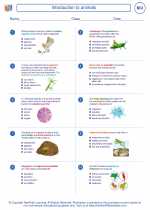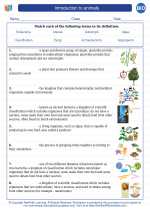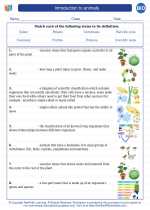What is Ammonia?
Ammonia is a compound composed of one nitrogen atom and three hydrogen atoms, with the chemical formula NH3. It is a colorless gas with a characteristic pungent odor. Ammonia is commonly used in household cleaning products, fertilizers, and various industrial processes.
Properties of Ammonia
- Odor: It has a strong, pungent odor.
- Solubility: It is highly soluble in water.
- Boiling Point: It boils at -33.34°C (-28.012°F).
- Uses: Ammonia is used in the production of fertilizers, household cleaners, and various industrial processes.
Ammonia in Biology
In biology, ammonia is an important compound in the nitrogen cycle. It is produced as a waste product by animals and is toxic in high concentrations. However, certain bacteria can convert ammonia into less toxic substances through a process called nitrification, which ultimately leads to the production of nitrates that can be used by plants as a source of nitrogen for growth.
Study Guide
When studying ammonia, it is important to understand its chemical structure, properties, and various uses. Additionally, it is crucial to grasp its role in the nitrogen cycle and its significance in biological processes.
Key Topics to Cover:
- Chemical structure and formula of ammonia
- Physical properties of ammonia
- Uses of ammonia in various industries
- Ammonia's role in the nitrogen cycle
Understanding these fundamental aspects of ammonia will provide a comprehensive knowledge of its importance in both chemistry and biology.
[Ammonia] Related Worksheets and Study Guides:
.◂Biology Worksheets and Study Guides High School. Introduction to animals

 Worksheet/Answer key
Worksheet/Answer key
 Worksheet/Answer key
Worksheet/Answer key
 Worksheet/Answer key
Worksheet/Answer key
 Vocabulary/Answer key
Vocabulary/Answer key
 Vocabulary/Answer key
Vocabulary/Answer key
 Vocabulary/Answer key
Vocabulary/Answer key
